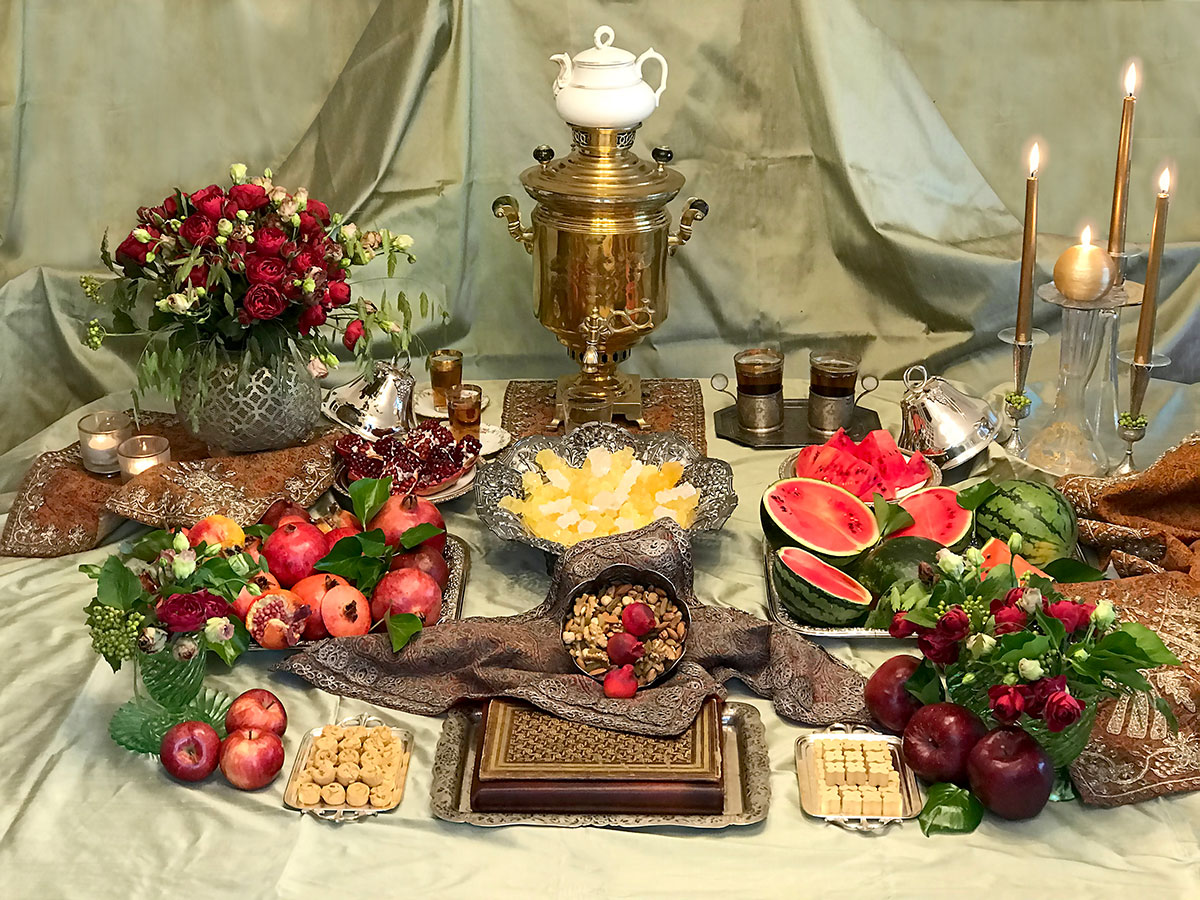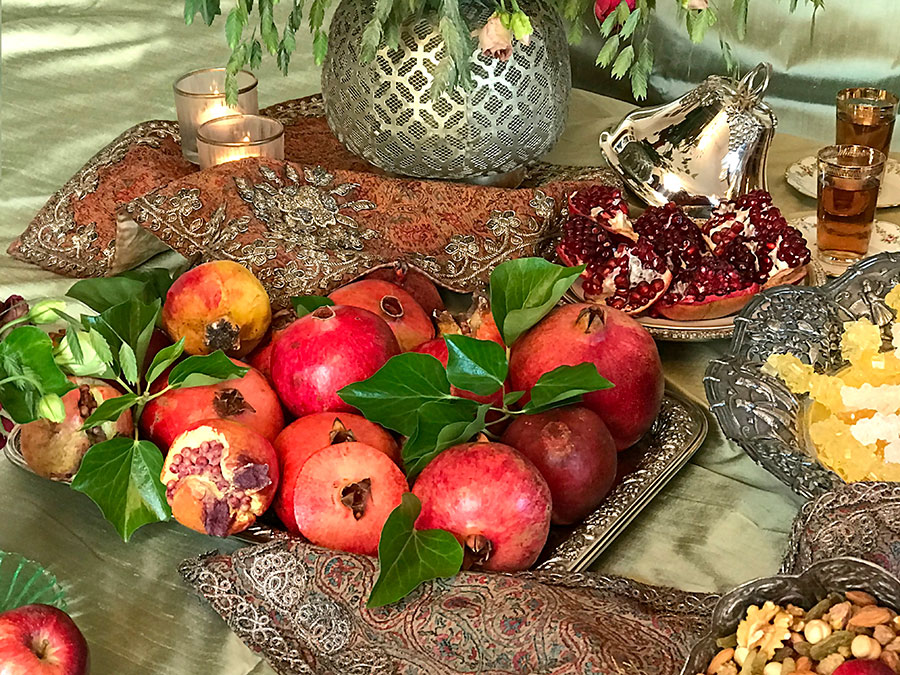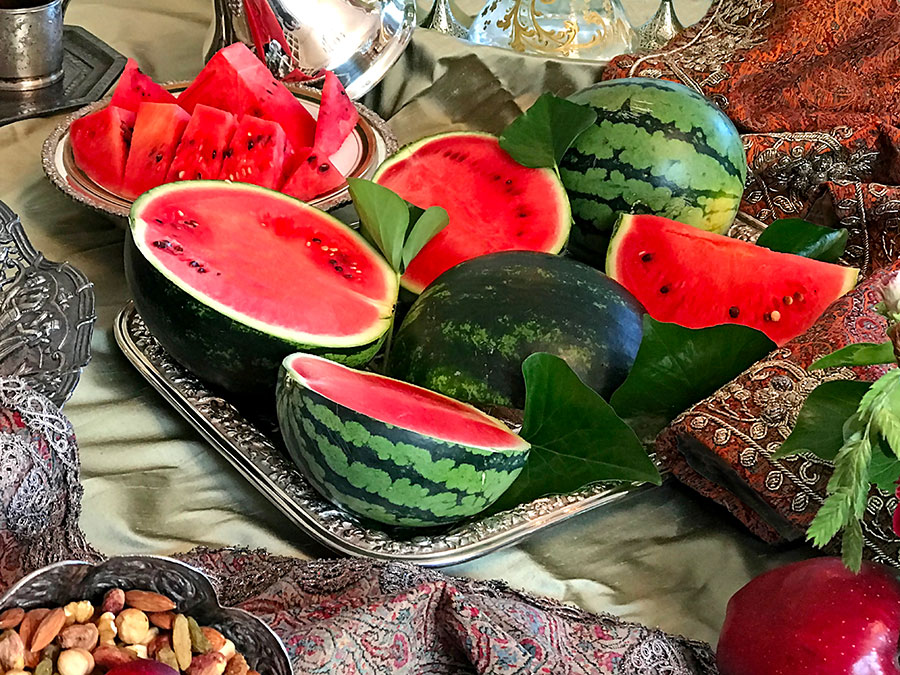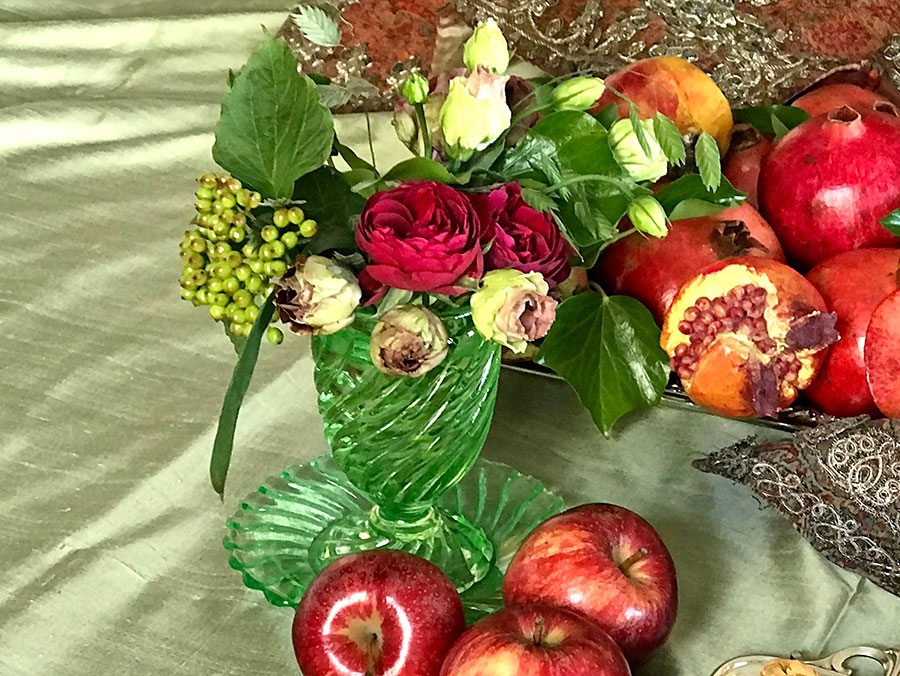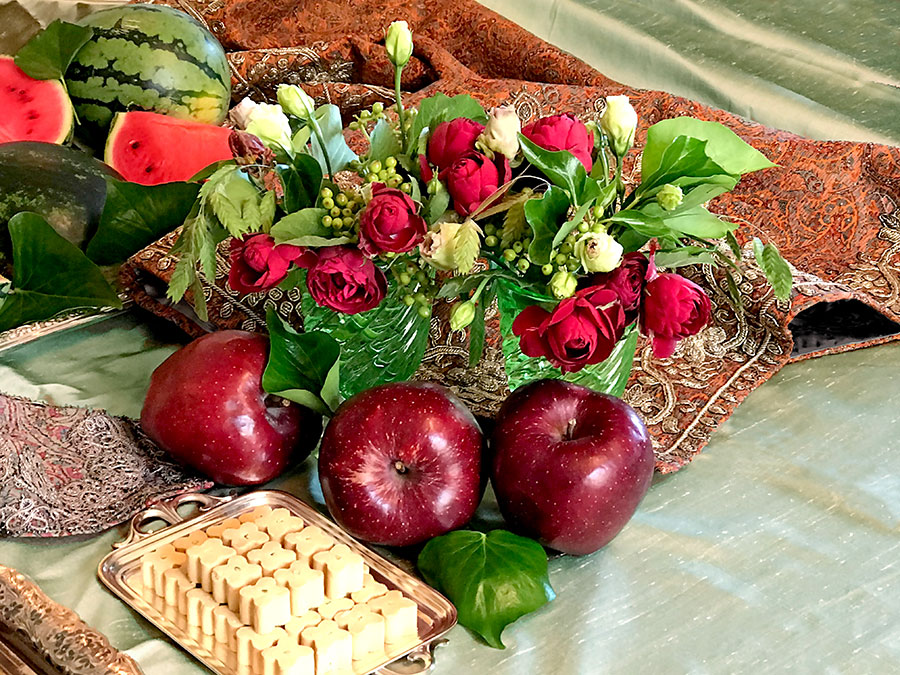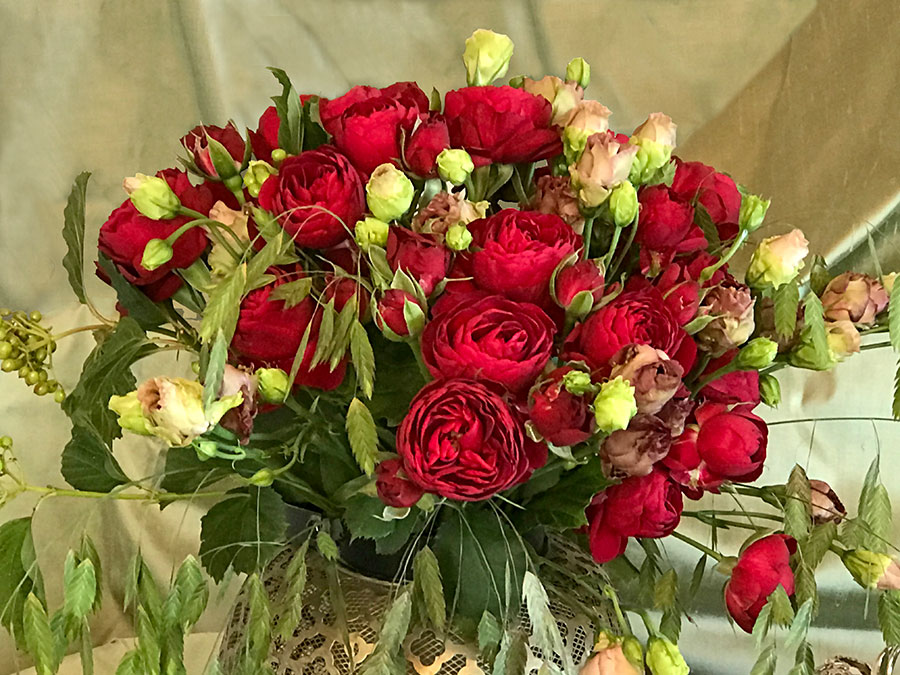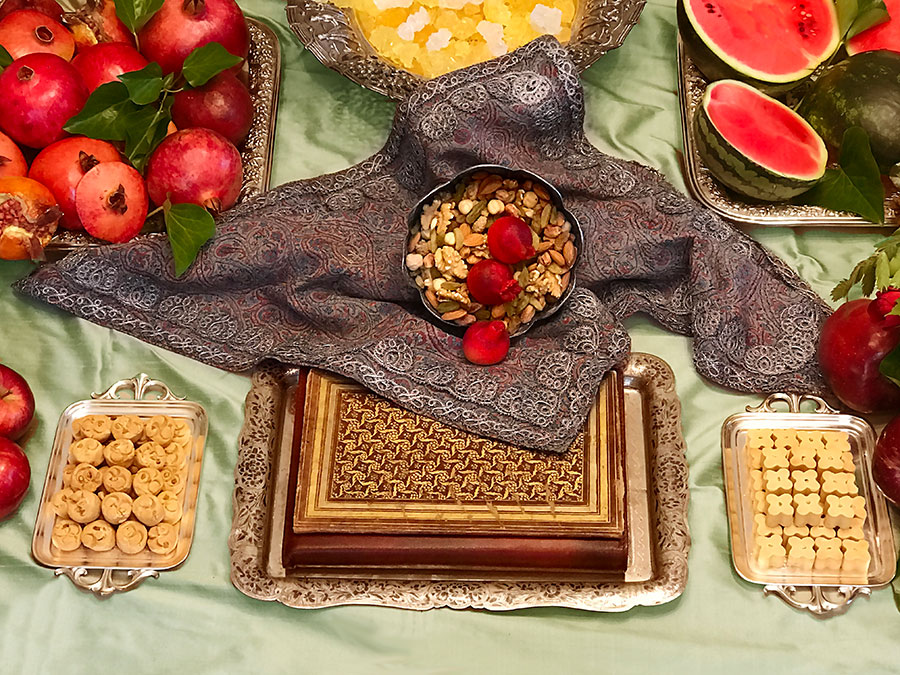Shab-e Yalda, Winter Solstice: Private Exhibition
To bring life and joy into the long, dark winter nights of 2020, a private exhibition was organized, presenting a sofreh reflecting the enchanting traditions of Shab-e Yalda, the winter solstice—the eve of 1 Dey in the Persian calendar, corresponding to 21 December. The feast of Yalda originates in the pre-Islamic period and is associated with agriculture. The divan-e Hafez (works of 14th-century Persian poet, Hafez) to recite poetry, and red fruits—watermelons and pomegranates—are important parts of this celebration, heralding the crimson hues of sunrise after absolute darkness, and the promise of longer days ahead. Interestingly, Shab-e Yalda is only about one minute longer than the preceding night. In the Persian tradition people get together, tea, sweets, fruits and nuts are served, and stories and poetry are recited and fortunes are told. The idea is to get through the darkest and longest night of the year, when it is believed that demons are most active, while celebrating the passing of darkness and the rebirth of the sun.
This is the overall view of the colourful and celebratory ceremonial contemporary sofreh for the occasion of Yalda. It incorporates a samovar to serve tea, exquisitely embroidered Persian textiles known as termeh, Persian pastries, crystal sugar, nuts, red fruits, flowers, flames and a book of verse (divan-e Hafez) to recite poetry and tell fortunes.
Click on the images below to enlarge
Pomegranates are important components of this celebration, and this section of the sofreh is dedicated to fresh and sculptured pomegranates, embellished with ivy leaves. The whole fruits are presented in a Persian silver tray, and the opened ones, with their exposed deep-red seeds, are presented in a Persian silver container. The bell-shaped lid is on display at a slant. Lengths of embroidered antique Persian textiles, known as termeh, enhance the beauty of this corner.
This section of the sofreh for Shab-e Yalda is dedicated to whole and cut watermelons, presented in different Persian silver containers. There is a striking contrast between the skin of the watermelon, in various shades of green, and its red flesh. Embroidered edges of the antique Persian textile, known as termeh, partially frame the stunning display of watermelons, which are important components of this celebration.

